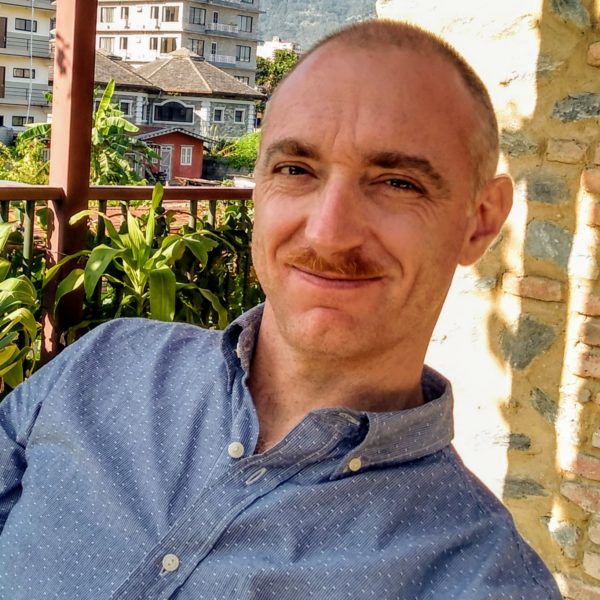The Joint Monitoring Programme (JMP) of UNICEF and WHO has released the latest SDG 6 progress report on 1 July. This blog unpacks what it says and why it matters, with a focus on sanitation.
The scale of the data JMP gathered, analysed and the trends they monitored for this report is huge: the 7.8 billion humans who populate the Earth. Beyond an obvious feeling of awe, what comes to mind is the well-known joke of the statistician who lies with their head in the oven and their feet in the freezer, and says “On average, I feel comfortable!”. In other words, data and trends at this scale need to be unpacked and interpreted, as big, aggregated figures can hide as much information as they reveal.
Some new things…
The JMP report presents some novelties. It mentions the disruptive force of Covid-19 and how it has hampered data collection. There is a section on fragile states and displaced populations. Each section (water, sanitation, hygiene) includes a component on “leaving no one behind”, which is also a focus area of UNICEF in WASH. Last but not least, the report includes hygiene and menstrual hygiene data. Another aspect is “x4”, which JMP shows in various infographics: current progress rates need to accelerate four times to attain SDG 6 by 2030.
In sanitation, the message is along the lines of “some progress but not quite yet”. Worldwide population with safely managed sanitation has increased dramatically, but not enough. Likewise, basic sanitation progress is too slow. On open defecation (OD), the JMP states the world is on track to end it before 2030. This sounds great but may raise questions, with India – a 1.3 billion country – as the origin of the largest drop in OD numbers. India has certainly taken giant steps against OD, but the extent of this is disputable: all districts and Village Councils have declared themselves open defecation free (ODF), but some studies show different figures, and the JMP reports a 15% of population practicing OD in 2020. Besides, even if India was ODF, could we legitimately assume other countries continue at the same breakneck pace and scale from here to 2030? And how do we adjust projections for slippage?
This generates an advocacy dilemma: if you say OD elimination is on track, big development funders may conclude this is mission accomplished and direct their resources elsewhere; but if you say it is still off track, funders may see ODF programming as a bottomless pit. It’s hard to tell what a right stance would look like – probably something in the middle.
Another puzzle is around faecal sludge management (FSM). For the first time, more people in the world have on-site sanitation than sewers. But, what about non-sewer off-site sanitation, i.e. faecal sludge management systems? JMP admits monitoring this is problematic, and data collection and analysis frameworks, as well as the availability of representative figures, are still lacking. Considering the growing use of non-sewer systems, and the emphasis on FSM in recent years, not counting FSM in sanitation statistics sounds like a clear knowledge gap.
…and some old issues
Here comes what is probably the thorniest sanitation issue in the report: equality, or lack thereof. Unfortunately, this is not breaking news. Whether you are on a path towards safely manged sanitation – or towards basic services, or the end of open defecation – or on a downward trend or stagnating, depends very much on your wealth, on where you live (urban or rural), on the region your country is in, and sometimes on the subnational area.
JMP data shows the divide between rich and poor is not closing, and urban dwellers are still better off than rural dwellers. While South Asia and East Asia advance fast, several sub-Saharan countries struggle with open defecation. The same applies to conflicts and crises: fragile states and displaced populations do not do well against the SDG 6 indicators (and the vast majority of the world’s poorest will live in fragile states by 2030). In this context, the story about the statistician with the head in the oven and feet in the freezer does not sound as fun.
The takeaways
SDG 6 calls for universally available and sustainable WASH, in the spirit of the human rights to water and sanitation. But inequalities are not decreasing, and gaps are not being closed. This makes SDG 6 harder to achieve: in the SDG agenda, looking at the top 80% is not enough.
Here it seems the takeaway for sanitation researchers, practitioners and policy makers is that the focus needs to stay on ‘last mile’ individuals, populations and countries – the fragile, least able, left behinds, bottom quintile: the most challenging contexts.
This calls for investments, ideas and perseverance. How to ensure that ODF-declared communities and countries are actually and sustainably so? How to make FSM ‘safe’? How to support rural settings in an urbanising world? How to bridge the sanitation gap between rich and poor, and achieve equitable progress? In short: How to prevent what economists may call K-shaped development? This is probably the challenge of the decade if we are to come close to SDG 6.
Although the ideas in this blog are mine, I am grateful to the Sanitation Learning Hub colleagues for their valuable input and feedback.




